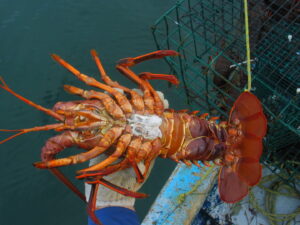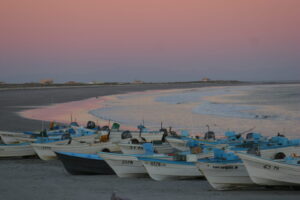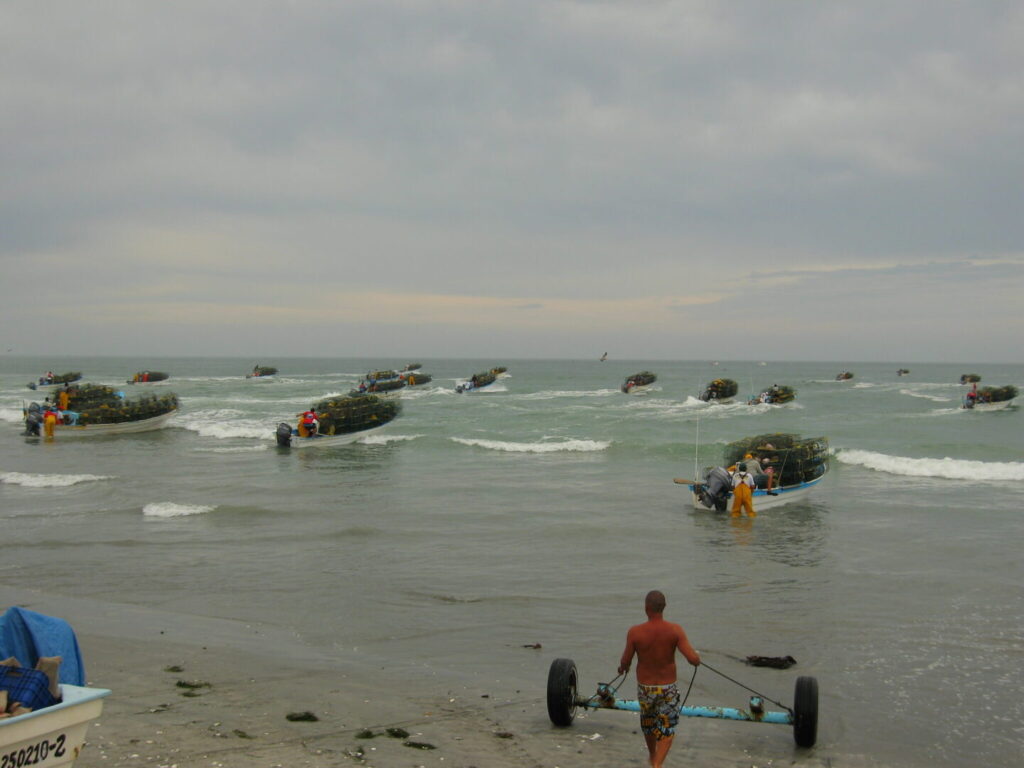A research published in the magazine Communications Earth & Environment revealed that the marine heat waves are causing significant decreases in catches of fish and fishery products. small-scale fisheries on the peninsula of Baja CaliforniaMexico, severely affecting local fishing communities.
These waves, characterized by prolonged periods of anomalously high ocean temperatureshave caused a reduction of between 15% and 58 % in the catches of key species such as the spiny lobsterthe sea cucumber and the sea urchinaccording to data collected over 40 years, according to a report published by Mongabay.
"When the water temperature goes up, the catches of these species go down," explained Juan Carlos Villaseñor-Derbez, lead author of the study and research professor at the University of Miami.
This decrease in catches not only affects the marine ecosystemsThe main objective of the project is to improve not only the quality of the fishery, but also the income of the communities that depend on these fisheries, especially the fishing cooperatives that have limited access to mobile resources.

The study focused on 55 areas concessioned to 43 fishing cooperatives along 1,000 kilometers of Pacific coastline, analyzing how sea surface temperatures influenced catches. It was identified that the marine heat waves most intense and prolonged occurred between 2014 and 2016, coinciding with events of El Niño. During that period, the fisheries were exposed up to 204 days per year to these extreme conditions, resulting in an average reduction of 56.4% in catches.
Lobster fisheries were the most affected, with negative impacts in 62.5% of the cooperatives involved in their catch. In the case of sea cucumber, seven of the nine cooperatives reported declines, while sea urchin showed negative effects in nine of the 22 active cooperatives. These figures underscore the vulnerability of small-scale fisheries, which do not have the mobility of industrial fleets to adapt to changes in climatic conditions.

In addition, the climate models predict an increase in the frequency and intensity of the marine heat waves in the region, with impacts that will intensify in the north of the peninsula over the next 15 to 30 years. This implies the need for urgent measures to protect both ecosystems and the communities that depend on them.
The study highlights examples of adaptation in communities such as the Natividad Islandin Baja California Sur, where the investment in the protection of the environment is giant sargassum forests and keystone species has allowed the recovery of resources such as the abalone. According to Fiorenza MicheliAccording to marine ecologist and co-author of the research, these management and conservation strategies offer a replicable model for other regions.
Key recommendations include diversification of productive activities, monitoring of environmental changes, protection of climate refuges, and strengthening local capacities through innovation and knowledge sharing.
"It is critical to prepare northern communities to meet the climate challenges that are already affecting the southern peninsula," says Villaseñor-Derbez.
The future of small-scale fisheries in Baja California will depend on the adaptive capacity of ecosystems and communities, as well as the implementation of climate policies at the local and national levels.
Source: Mongabay


